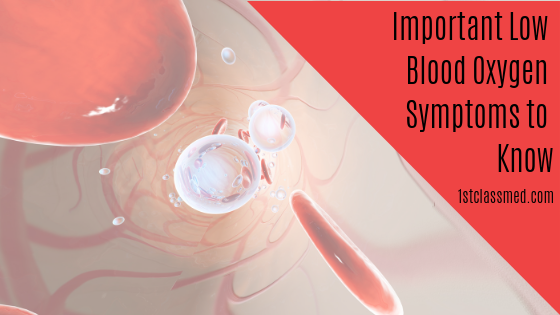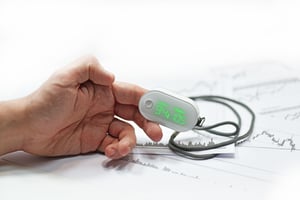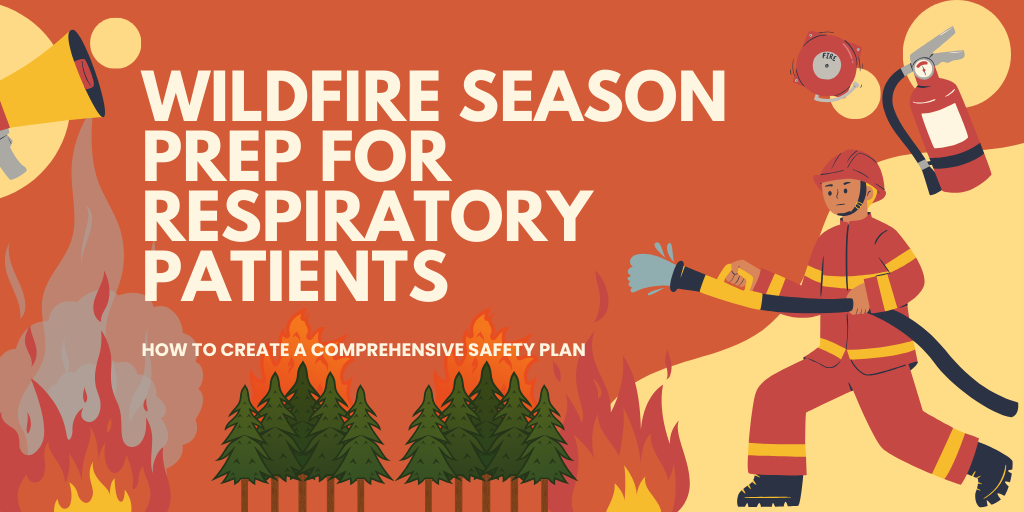
For those with COPD low oxygen levels in the blood is not abnormal, but it also shouldn’t be regular.
Many with COPD often have some form of supplemental oxygen in order to keep oxygen levels in the body normal.
Even with supplemental oxygen, it is possible that low oxygen levels can occur, resulting in symptoms that can become dangerous if not caught.
We wanted to address symptoms of low oxygen levels in the blood that may not directly correlate to low oxygen but can be dangerous if not caught.
Shortness of Breath
Though many with COPD suffer from shortness of breath, if it is more common and appears when you are not physically active you need to contact your doctor.
If it is severe and very sudden, it is important to contact your doctor right away.
Another time to see your doctor is if you feel severe shortness of breath while exercising or doing any physical activities.
Headache
Headaches are common among many people, with or without COPD.
Headaches in COPD patients often occur from a lack of oxygen in the brain as well as too much carbon dioxide.
COPD headaches often occur in the morning after carbon dioxide has been building up in your sleep.
But if you notice headaches often throughout the day, contact your doctor for an  appointment to see what can be done.
appointment to see what can be done.
Dizziness
Another symptom of low blood oxygen levels is dizziness.
This can be very concerning as oxygen levels would need to be very low to feel extremely dizzy.
If you get dizzy from walking, or standing/sitting too long, give your doctor a call.
Dizziness can occur when an individual stands up too quickly but should subside in moments.
You can also feel lightheaded, which is another possible symptom of low blood oxygen levels.
Rapid Breathing
If you notice rapid, shallow breathing, it could mean your body is struggling to get oxygen, which can also point to your blood oxygen levels being low.
Rapid breathing should only occur after a very strenuous workout, but not if you are just sitting on the couch.
Confusion
A feeling of confusion or lack of understanding is an often-uncommon symptom in COPD patients, unless their blood oxygen levels are too low.
When the oxygen levels are low in the blood, it means less oxygen in the brain, which can cause not only headaches but confusion as well.
Noticing any confusion in yourself or a loved one that is abnormal will require a trip to the doctor.
Lack of Coordination
When there are low levels of oxygen in the blood, many issues can arise that affect the brain.
The brain requires a lot of oxygen in order to function properly, so without enough oxygen, parts of the brain can shut down.
Lack of coordination is another thing affected by low oxygen levels in the brain and need to be looked at right away before any injury occurs.
Rapid Heartbeat
If you notice your heart is working harder than normal, it can be because of low oxygen levels in the blood.
The heart has to work harder in order to get enough oxygen throughout the body, if not, some organs can shut down without enough oxygen.
How to Check Oxygen Levels
The most accurate test to measure oxygen levels is an ABG test, or an arterial blood gases test.
 This test is done in a medical office and cannot be done at home, unless there are doctors orders for a in-home nurse or respiratory therapist to run the test.
This test is done in a medical office and cannot be done at home, unless there are doctors orders for a in-home nurse or respiratory therapist to run the test.
A good at home test can be done with a pulse oximeter, as it is non-invasive and reads relatively accurate.
A pulse oximeter can be great if you experience any of the above symptoms but aren’t sure what the cause is.
Once you use a pulse oximeter you can determine if you need to take a trip to the doctor or not.
If you end up heading to the doctor, they may put you on supplemental oxygen in order to help your oxygen levels go up.
Or if you are already on supplemental oxygen your doctor may raise your LPM or give you instructions to do at home if you do have low oxygen levels.
Conclusion
Symptoms of low blood oxygen levels can become very dangerous if not caught and treated in time.
Some symptoms may lead you to believe it is nothing to worry about (i.e. a headache) while others can be scary, and you may not know why its happening (i.e. confusion or dizziness).
If you notice any abnormal symptoms, checking your blood oxygen levels with a pulse oximeter or taking a visit to your doctor’s office can minimize any risks of a more serious condition.









